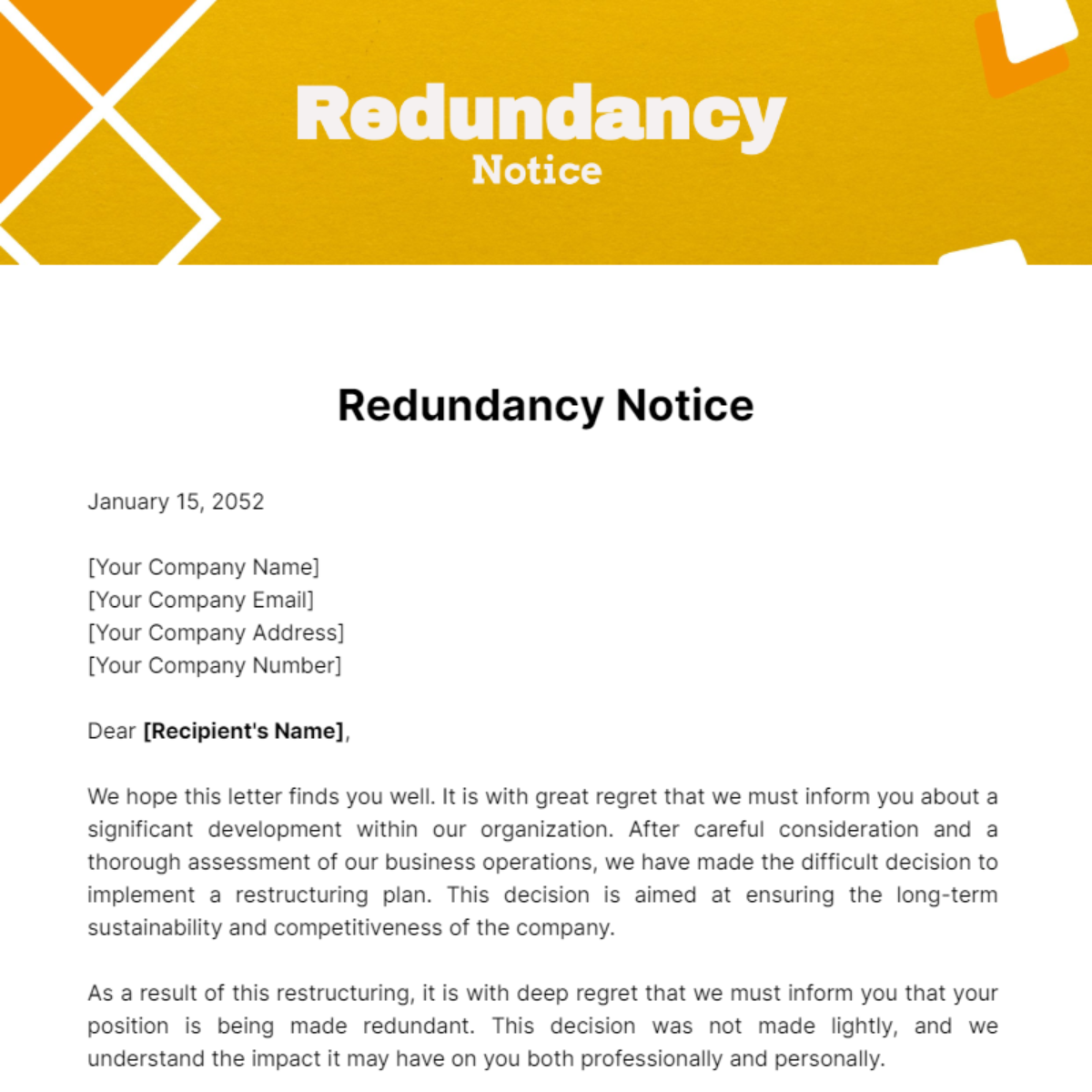Your Rights to Redundancy If Company Goes Bust: UK Employee Protections
Exploring the Operational Dynamics of Firm Redundancy and Its Long-Term Sustainability

Redundancy Approaches for Organization Connection
In order to guarantee undisturbed operations, businesses must implement reliable redundancy approaches for business continuity. Redundancy in this context refers to the replication of critical parts or features within a system to reduce the effect of potential failures. By including redundancy approaches, organizations can enhance their resilience versus interruptions brought on by different aspects such as all-natural calamities, equipment failures, or cyber-attacks.
One usual redundancy strategy is the implementation of back-up systems and data storage space solutions. This entails creating duplicates of important data and systems that can be triggered in instance of a primary system failing. Furthermore, companies can develop repetitive communication networks and power resources to maintain connection and operations during unpredicted occasions.
In addition, cross-training staff members to perform several functions within the company can work as a valuable redundancy approach. This ensures that essential jobs can still be executed also if essential employees are inaccessible due to disease or various other reasons. In general, reliable redundancy strategies are necessary for services to copyright functional continuity and minimize the effect of possible interruptions.
Impact of Redundancy on Organizational Strength
Given the vital function redundancy methods play in guaranteeing service continuity, checking out the impact of redundancy on business resilience ends up being important for comprehending the holistic operational characteristics of a firm. Redundancy, when strategically applied, can substantially contribute to improving an organization's durability in the face of unforeseen challenges.
Moreover, redundancy can boost employee spirits and self-confidence, understanding that there are backup strategies in place to address unpredicted conditions. This complacency can result in raised productivity and an extra positive work environment. In addition, redundancy can promote innovation and creative thinking within a company as staff members really feel encouraged to take computed threats, recognizing that there is a safeguard to support them in instance of failing. On the whole, the influence of redundancy on business strength is profound, forming the long-term sustainability and success of a company.
Stabilizing Effectiveness and Flexibility in Redundancy
Accomplishing an unified equilibrium in between operational efficiency and adaptive flexibility is a crucial obstacle in the strategic deployment of redundancy within organizations. Efficient operations are essential for preserving performance and cost-effectiveness, ensuring that resources are utilized ideally. However, extreme focus on effectiveness alone can bring about rigidness, making it difficult for companies to adjust to unexpected adjustments or obstacles. On the various other hand, adaptability allows companies to react nimbly to progressing situations, cultivating development and strength. Yet, as well much flexibility without a solid functional foundation can lead to ineffectiveness and incongruity.
To stabilize effectiveness and adaptability in redundancy planning, organizations have to meticulously evaluate their operational requirements, market characteristics, and tactical goals. Carrying out lean practices can improve performance by improving processes and getting rid of waste, while fostering a society of versatility and continual enhancement can enhance adaptability. Additionally, buying cross-training programs and robust communication channels can assist cultivate a versatile workforce capable of managing diverse jobs throughout periods of transition. Ultimately, finding the right stability between efficiency and adaptability is essential for developing a lasting and resilient company when faced with uncertainty.
Long-Term Sustainability Through Redundancy Planning
To guarantee long-lasting feasibility and stability, companies need to strategically straighten their redundancy preparation with lasting sustainability goals, check out here thereby integrating operational performance with adaptive flexibility. Lasting sustainability through redundancy planning involves even more than simply temporary cost-cutting steps. It calls for a detailed tactical strategy that anticipates future obstacles and possibilities. Companies need to check out redundancy not as a reactive remedy to immediate issues yet as a positive strategy for long-lasting success. By incorporating redundancy preparation with sustainability look here objectives, organizations can develop a resilient framework that can withstand different market variations and inner changes.

Positive Procedures for Sustainable Business Procedures
How can business proactively boost their operational sustainability for lasting success? Implementing positive actions is essential for firms aiming to make sure lasting operations. One essential method is to buy technology and advancement to simplify processes, lower waste, and stay affordable in the market. Adopting sustainable methods such as minimizing energy usage, lessening carbon footprint, and enhancing resource usage can learn this here now not only benefit the atmosphere however likewise bring about set you back financial savings over time.
Moreover, promoting a culture of constant enhancement and knowing within the organization can enhance adaptability to transforming market problems and consumer demands. Encouraging staff member participation in decision-making procedures and providing possibilities for specialist advancement can increase morale, productivity, and total efficiency. Establishing clear goals, keeping an eye on vital performance indications, and consistently examining progression are essential elements of proactive sustainability monitoring.
Working together with vendors, clients, and other stakeholders to advertise sustainable techniques throughout the supply chain can produce a ripple effect of favorable impact - redundancy pay if company goes bust. By taking proactive steps towards operational sustainability, companies can construct durability, drive advancement, and secure their lasting success in an ever-evolving company landscape
Conclusion

In the realm of business administration, the tactical release of firm redundancy stands as an essential yet complex practice that demands a delicate balance in between operational efficiency and long-lasting practicality. By studying the operational characteristics that underpin business redundancy and evaluating its more comprehensive ramifications for business durability and flexibility, a nuanced understanding of exactly how redundancy approaches can form the future trajectory of a firm starts to unravel.Given the critical function redundancy strategies play in making certain company connection, checking out the influence of redundancy on organizational durability comes to be critical for comprehending the all natural operational characteristics of a firm. In general, the effect of redundancy on business resilience is extensive, forming the long-term sustainability and success of a business.
In conclusion, recognizing the functional dynamics of firm redundancy is important for ensuring long-lasting sustainability.